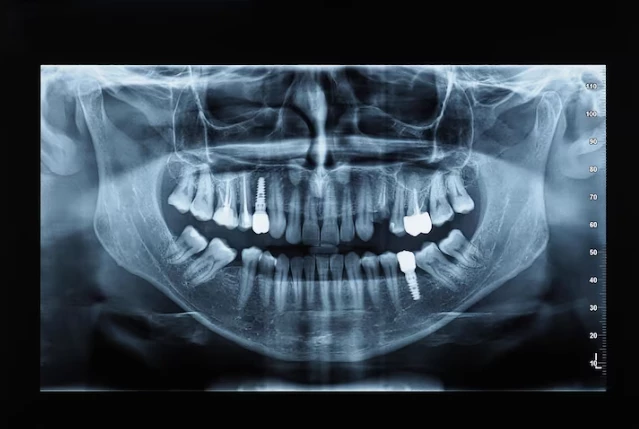In the world of modern dentistry, technology has revolutionized the way we approach various dental procedures, and implant dentistry is no exception. Gone are the days when dental implants were a hit-or-miss endeavor.
Thanks to advancements in imaging technology, particularly Cone Beam Computed Tomography (CBCT), implant planning has become more precise and predictable than ever before. In this blog, we’ll explore the significance of CBCT in implant dentistry, its accuracy, benefits, and when it should be employed for optimal outcomes.
Why Is CBCT Important In Implant Dentistry?
CBCT, short for Cone Beam Computed Tomography, is a type of advanced imaging technology that has become a game-changer in the field of implant dentistry. Unlike traditional two-dimensional X-rays, CBCT provides a three-dimensional view of the patient’s oral and maxillofacial structures. This 3D visualization is invaluable when it comes to planning and executing dental implant procedures.
One of the key reasons why CBCT is so important in implant dentistry is its ability to offer a comprehensive view of the patient’s jawbone, teeth, nerves, and surrounding anatomical structures. This level of detail allows dental professionals to identify potential challenges and complications before they arise, ensuring a safer and more successful implant placement.
Moreover, CBCT helps in customizing the treatment plan for each patient. Dental implants are not one-size-fits-all; they need to be tailored to the patient’s specific anatomy. With CBCT, dentists can determine the optimal implant size, angle, and location, which is crucial for achieving long-term stability and functionality.
Should Cone Beam Computed Tomography Be Routinely Obtained In Implant Planning?
 While CBCT is undoubtedly a powerful tool, the decision to routinely obtain it for implant planning should be made on a case-by-case basis. Factors such as the patient’s medical history, the complexity of the case, and the dentist’s experience play a role in determining whether CBCT is necessary.
While CBCT is undoubtedly a powerful tool, the decision to routinely obtain it for implant planning should be made on a case-by-case basis. Factors such as the patient’s medical history, the complexity of the case, and the dentist’s experience play a role in determining whether CBCT is necessary.
For straightforward implant cases in patients with no significant medical issues, traditional two-dimensional X-rays and clinical examination may suffice. However, in more complex cases, where the implant placement is near vital structures like nerves or sinuses, or in cases of severe bone loss, CBCT becomes indispensable. It allows the dentist to assess the precise location of anatomical structures and anticipate potential complications.
Furthermore, CBCT is often recommended when planning for full-mouth restorations or multiple implant placements. In these situations, the 3D images provide a comprehensive view of the entire oral environment, aiding in the development of a more accurate and successful treatment plan.
Ultimately, the decision to use CBCT should prioritize patient safety and the achievement of optimal outcomes. Dentists should use their clinical judgment to determine when CBCT is warranted, ensuring that each patient receives the level of care they need.
How Accurate Is CBCT In Implant Planning?
CBCT’s accuracy in implant planning is one of its most significant advantages. The three-dimensional images generated by CBCT scans provide a highly detailed and precise representation of the patient’s oral and maxillofacial anatomy. This level of accuracy allows dental professionals to plan implant placements with confidence.
One of the key aspects of accuracy is the ability to measure bone density and quality. CBCT scans provide valuable information about the bone’s density, which is essential for selecting the appropriate implant size and type. Additionally, the 3D images allow for the evaluation of bone height, width, and angulation, ensuring that implants are placed in the most stable and supportive locations.
Furthermore, CBCT’s accuracy extends to assessing the proximity of vital structures, such as nerves and sinuses. By visualizing these structures in 3D, dentists can plan implant placements with precision, minimizing the risk of complications.
In summary, CBCT’s accuracy in implant planning is a game-changer, providing dental professionals with the tools they need to make informed decisions and execute implant procedures with the utmost precision.
What Are The Benefits Of CBCT For Implant Planning?
The benefits of CBCT in implant planning are numerous and far-reaching. Let’s take a closer look at some of the key advantages:
- Enhanced Precision: CBCT provides highly detailed 3D images that allow for precise implant planning and placement. This precision reduces the risk of complications and ensures the long-term success of the implant.
- Customized Treatment: CBCT helps tailor treatment plans to each patient’s unique anatomy. This customization leads to better outcomes and patient satisfaction.
- Improved Safety: By visualizing vital structures in advance, CBCT helps dentists avoid accidental damage to nerves or sinuses during implant placement, increasing patient safety.
- Time Efficiency: CBCT scans are quick and efficient, saving both the dentist’s and the patient’s time. This efficiency translates to a more streamlined treatment process.
- Patient Education: The 3D images generated by CBCT scans can be used to educate patients about their treatment plans. Visualizing the proposed implant placement can improve patient understanding and confidence in the procedure.
When Should A CBCT Be Used In Dentistry?
As previously mentioned, the decision to use CBCT in dentistry should be made based on the individual patient’s needs and the complexity of the case. However, there are specific scenarios where CBCT is particularly valuable:
 Complex Cases: CBCT is essential for complex implant cases where the implant placement is near vital structures, or when there is significant bone loss. It ensures that the treatment plan is tailored to the patient’s specific circumstances.
Complex Cases: CBCT is essential for complex implant cases where the implant placement is near vital structures, or when there is significant bone loss. It ensures that the treatment plan is tailored to the patient’s specific circumstances.- Full-Mouth Restorations: When planning for full-mouth restorations involving multiple implants, CBCT offers a comprehensive view of the entire oral environment, aiding in the development of an accurate and successful treatment plan.
- Evaluation of Bone Density: CBCT is indispensable for assessing bone density and quality, helping dentists select the appropriate implant size and type for optimal results.
- Impacted Teeth and Pathology: CBCT is valuable for evaluating impacted teeth, diagnosing pathology, and planning for their removal or surgical intervention.
- Orthodontic Treatment: In orthodontics, CBCT can be used to assess the position of teeth, root anatomy, and skeletal structures, aiding in treatment planning and monitoring progress.
Cone Beam CT scans have become an invaluable tool in implant dentistry, revolutionizing the precision and success of implant placements. While they may not be necessary for every case, their accuracy, customization capabilities, and numerous benefits make them a valuable asset for dentists seeking to provide the highest level of care to their patients.
When used judiciously and in alignment with clinical judgment, CBCT scans can contribute significantly to the long-term success of dental implant procedures, ensuring patients can confidently smile and chew for years to come.
Why Choose Cascade Dental for Your Implant Dentistry Needs?
When it comes to implant dentistry, choosing the right dental practice can make all the difference in your experience and the ultimate success of your procedure. At Cascade Dental, we take pride in offering state-of-the-art implant dentistry services that incorporate the latest technology, including Cone Beam CT scans, to ensure the best possible outcomes for our patients.
Frequently Asked Questions
Q1: Is a Cone Beam CT scan safe for implant planning?
A1: Yes, Cone Beam CT scans are safe for implant planning. The radiation exposure is minimal compared to traditional medical CT scans, and our dental professionals take all necessary precautions to ensure your safety during the procedure.
Q2: How long does it take to get a Cone Beam CT scan for implant planning?
A2: The process is quick and efficient, typically taking just a few minutes to complete the scan. You’ll receive your results promptly, allowing us to move forward with your implant planning without delay.
Q3: Are Cone Beam CT scans covered by insurance?
A3: Insurance coverage for Cone Beam CT scans can vary. We can assist you in verifying your insurance benefits to determine your coverage and any out-of-pocket expenses.
Q4: What if I’m nervous about the implant procedure?
A4: Your comfort is important to us. If you have anxiety about the procedure, we offer various sedation options to help you relax and feel at ease during your implant surgery.
Take the First Step Toward a Beautiful Smile!
Don’t let the fear of uncertainty hold you back from achieving a healthy, beautiful smile through implant dentistry. At Cascade Dental, we combine expertise, technology, and patient-centered care to provide you with the best possible experience and results.
If you’re considering dental implants or have any questions about the role of Cone Beam CT scans in your implant planning, don’t hesitate to contact us today. Schedule a consultation with our experienced team, and together, we’ll create a personalized treatment plan to restore your smile and confidence. Your journey to a brighter, healthier smile begins here at Cascade Dental!


